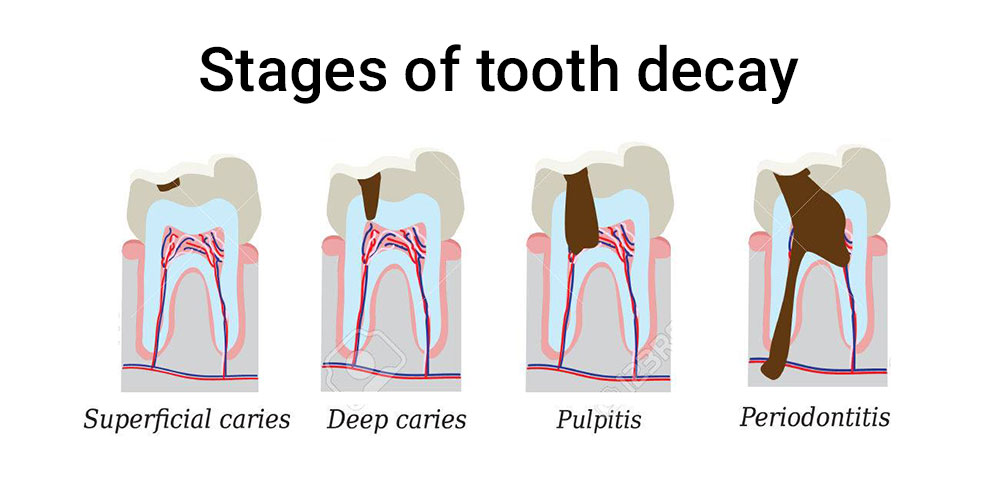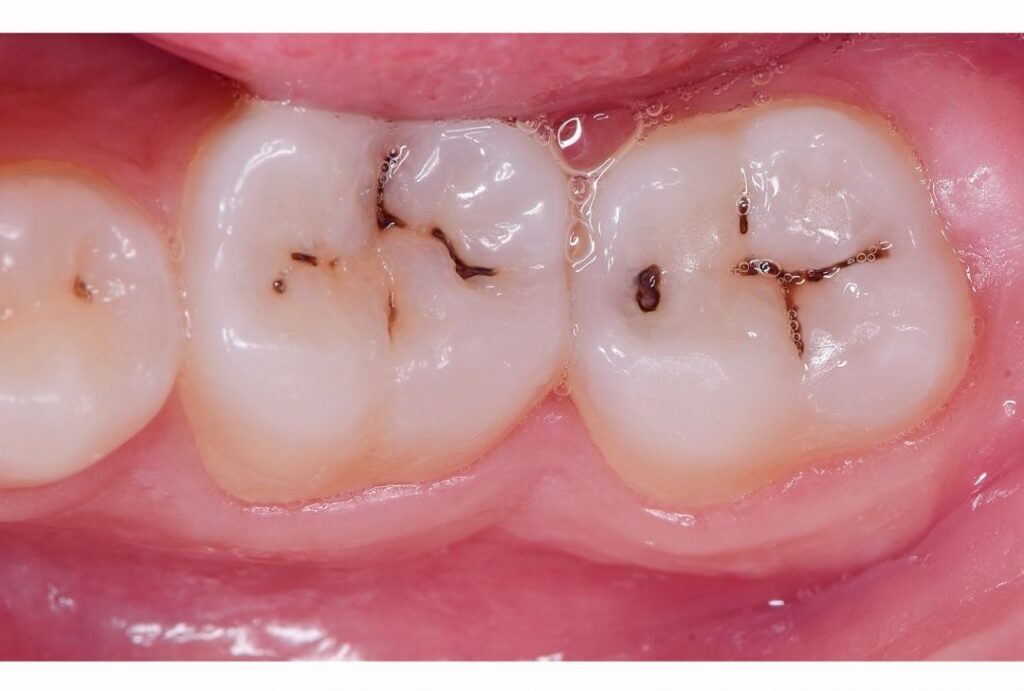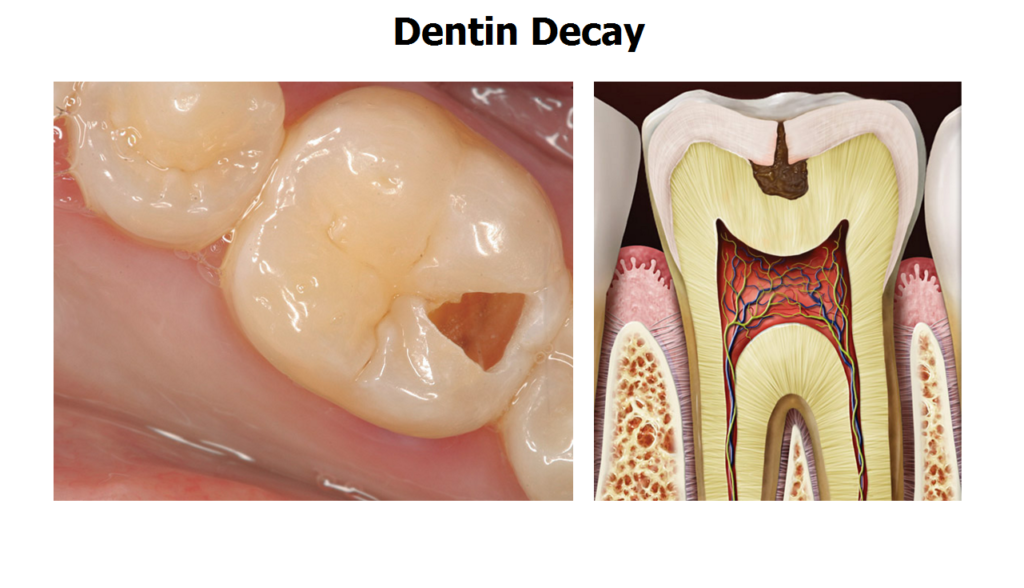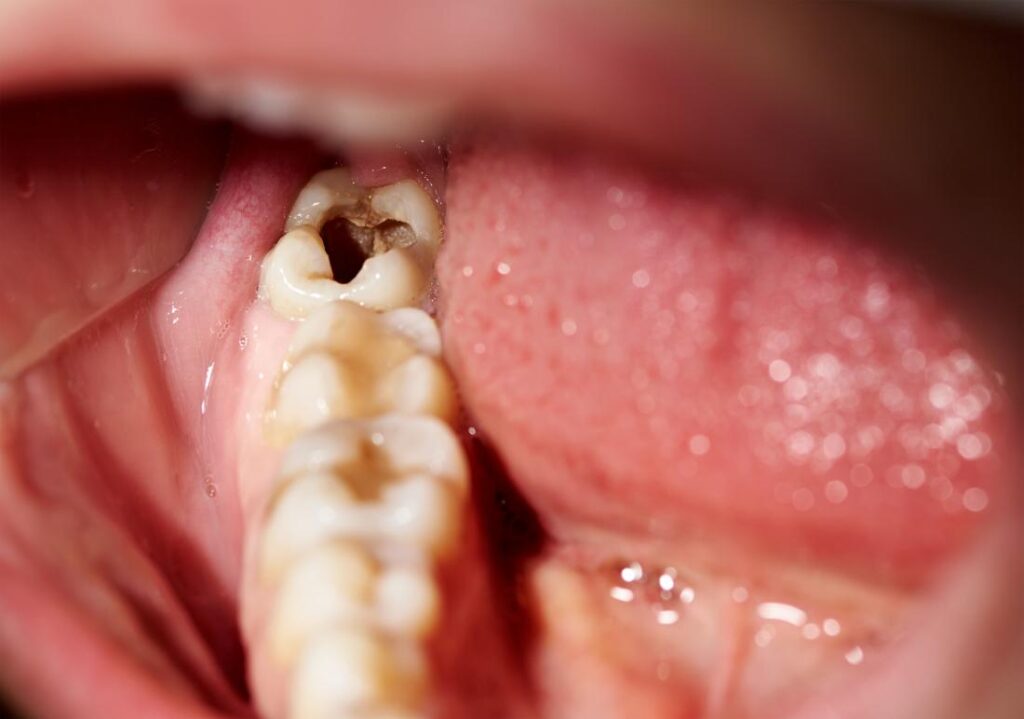
Dental / tooth decay is a common disease of our teeth. It is a progressive disease that affects hard tooth tissue of the tooth and is stimulated by the action of bacteria that accumulates and creates plaque. If in any case,it is not treated early, this decay can cause necrosis of the pulp and moreover, create an abscess at the top of the tooth root and in which extraction usually follows.
Dental decay is caused by plaque acids that gradually dissolve away the enamel and dentin of the tooth. Decay damages your teeth and may lead to the tooth needing to be filled or even taken out.
Did you know there are five distinct stages of tooth decay?
Understanding how a cavity progresses can assist you in preventing each successive stage from occurring in your oral cavity.
Stage One: White Spots

In stage one, the tooth begins to show signs of strain from the attack of sugars and acids, and white spots will begin to materialize below the surface of the enamel. Enamel is the hardest tissue in your body and is mostly made up of minerals. These white spot are represents demineralization of the tooth and can be easy to miss out because they’re likely to occur on your molar teeth. A dental examination, is designed to find such cavities!
Stage Two: Enamel Decay

Stage two remarks the beginning of the end for the surface enamel that is being attacked. Initially, the tooth erodes from the outside, so the outer enamel will still be intact for the first half of this second stage. Once the cavity breaks through the surface of the enamel, there is no turning back, and you will need to have the cavity treated with a filling.
Stage Three: Dentin Decay

If a tooth decay/cavity in your mouth progresses beyond stage two, you’d tend become aware of it when it started to hit stage three because it would probably start to cause some discomfort or pain. At this level, the cavity begins to eat away at the second layer of tooth material that lies beneath the enamel: which is the dentin. A filling can still be used to stop the progression of bacteria causing damage to the tooth in order to prevent the cavity from reaching the tooth’s most critical component: the pulp.
Stage Four: Pulpal Involvement

Once the tooth decay/cavity reaches the pulp, it’s going to hurt. So if you’ve unfortunately missed all the signs and symptoms to this point, unbearable pain will certainly let you know there is a huge problem. Stage four is serious, and a root canal is the only treatment option at this stage which save for a complete extraction.
Stage Five: Abscess Formation

In the fifth and final stage of a tooth decay/cavity, the infection has reached the tip of the root and exits the tip of the tooth’s structure. This in turn infects the surrounding tissues and possibly the bone structure. Swelling would occur accompanied with severe pain. An abscess can be fatal life threatening if not dealt immediately. Root canal or extraction would be the order of the treatment .
https://www.healthline.com/health/dental-and-oral-health/tooth-decay-stages
As you can see, cavities don’t happen overnight. In the early stages, regular visits can help reverse the progression of the disease.Regular visits to your dentist are not only essential for healthy teeth but overall systemic health. Even if you have never had a tooth decay, it is important to see your dentist to prevent any future oral care issues. Routine dental checkups and regular cleanings will not only help keep your family’s teeth healthy, but they will also establish a lifetime of healthy choices for you and your family to know more visit Infinity Dental best dental clinic in Lucknow.


